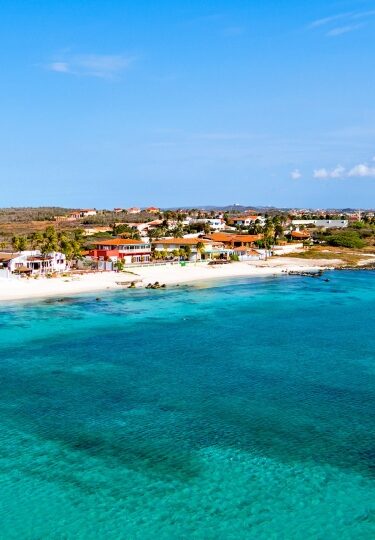The small southern Caribbean island of Aruba is home to many of the Caribbean’s well-known draws including warm turquoise water, white sand beaches, colorful downtown blocks in the capital of Oranjestad, and vibrant coral reefs near the shore.
Snorkeling in Aruba is a popular pastime because of the island’s clear and calm waters, which offer ideal conditions for snorkeling—you can often see as far as 100 feet, and waves and currents are quite minimal.
Aruba also has shallow beach drop-offs, making most of the water around the beaches pretty warm; the average is around 80 to 85 degrees Fahrenheit. In other words, the island seems as if it was intentionally designed as a snorkeler’s paradise.
If you’re heading there on a vacation and are not sure where to begin, read on and discover the best spots for snorkeling in Aruba.
De Palm Island
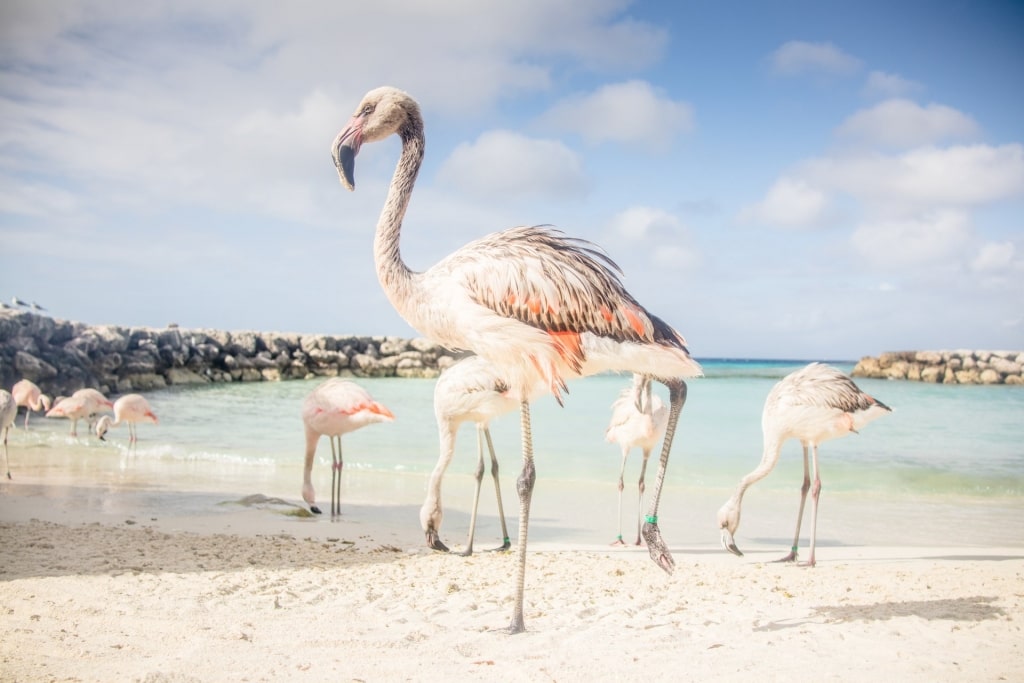
De Palm Island
One of the best things to do in Aruba is to head to De Palm Island off the coast of the mainland for snorkeling and other watersports. De Palm has its own coral reef surrounding the island, where you can snorkel from the shore rather than having to take a boat tour. De Palm Island is a great place for beginner snorkelers as it offers complimentary snorkel tours twice a day, where you’re likely to see some of the island’s colorful fish in water no more than waist-deep.
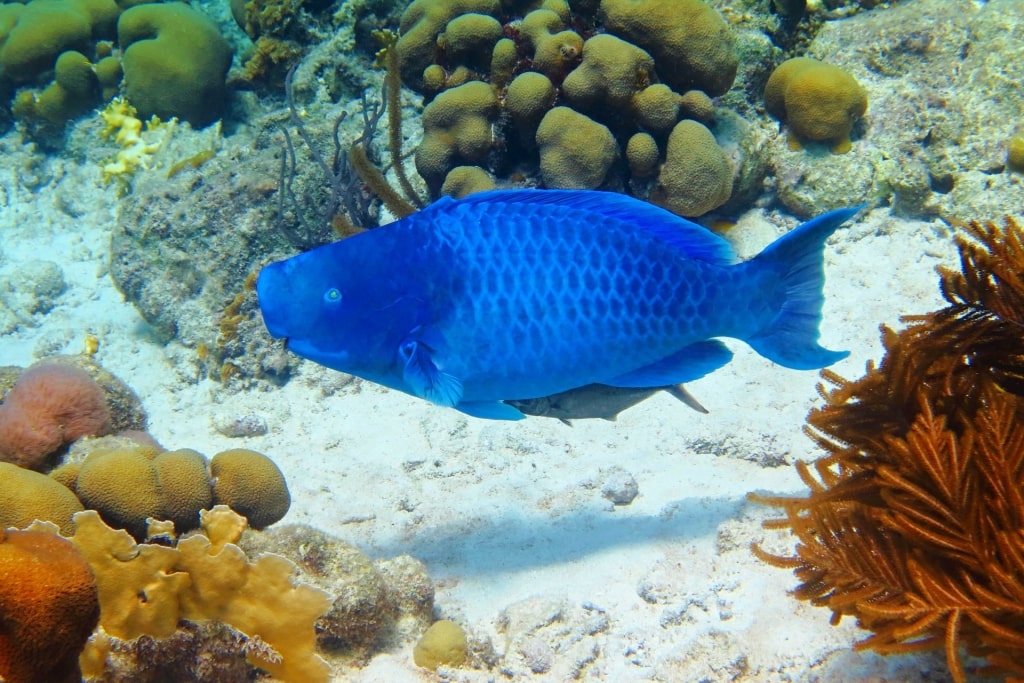
De Palm Island
On the reefs, look for parrotfish and triggerfish in various hues; yellow or black-and-white striped angelfish; and, if you keep your eyes on the nooks in the reef, you may even see spotted moray eels. If you don’t want to go on a tour, you can always rent snorkel equipment on the island and go on your own excursion offshore.
Since De Palm is a private island, it operates on an all-inclusive basis. Once you’ve had your fill of snorkeling (or while you’re taking a break in the shade), it’s easy to grab an icy cocktail and authentic Aruban food or relax on a lounger in the surf.
For those traveling with families, some of the best things to do in Aruba with kids include banana boat rides and snuba excursions.
These are a perfect option if you’re ready to move beyond snorkeling but aren’t quite prepared to try scuba diving in Aruba yet.
The Antilla Shipwreck
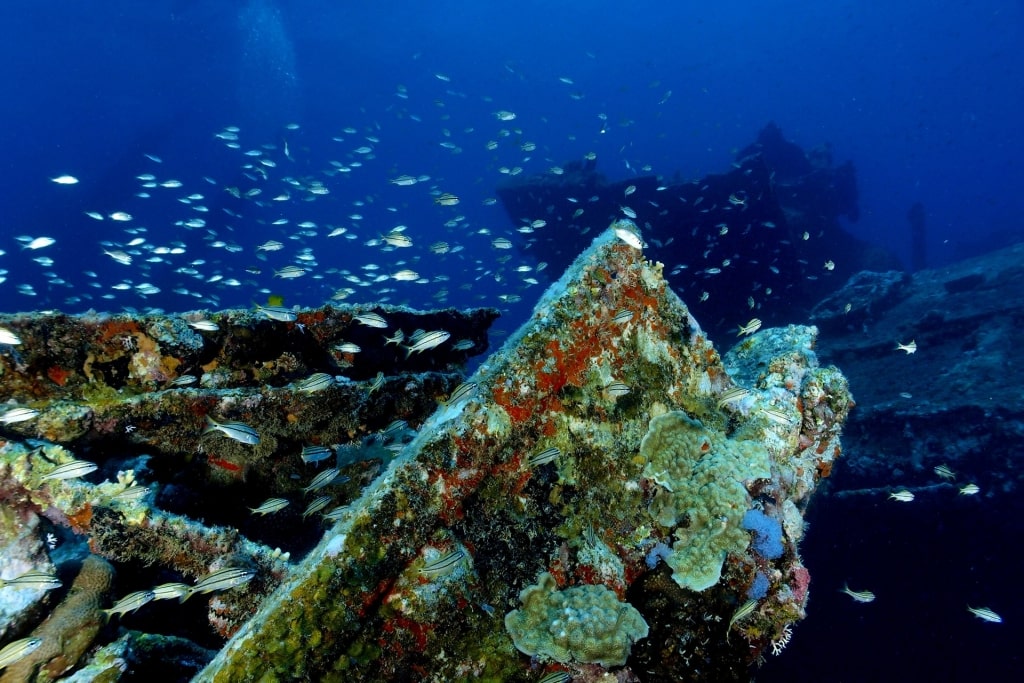
The Antilla Shipwreck
Most shipwrecks are reserved for scuba divers that can reach deeper ocean depths. But luckily, the 1940 sinking of the Antilla shipwreck is one of the best and most easily accessed snorkeling sites in Aruba.
Measuring over 400 feet long, this surprisingly intact shipwreck is the second-largest one in all of the Caribbean. A former German trade ship in the 1930s, the Antilla sank during the era of Nazi rule and while there are several theories as to why it ended up in the bottom of the ocean, there is still no proven explanation for its sinking.
You could easily spend hours swimming around this large shipwreck. The deepest part of the Antilla sits in 60 feet of water, while the shallowest end is around 25 feet deep. Since visibility is possible between 70 and 90 feet, it’s easy to see the entire ship from above, even if you don’t dive down to the bottom of the ocean.
During your visit to Antilla, you’re likely to see any number of animals found in Aruba’s waters, but the wreck is most known for its healthy and colorful coral formations, which attract lobsters, eels, sea turtles, and large schools of fish in the shadows.
Boca Catalina
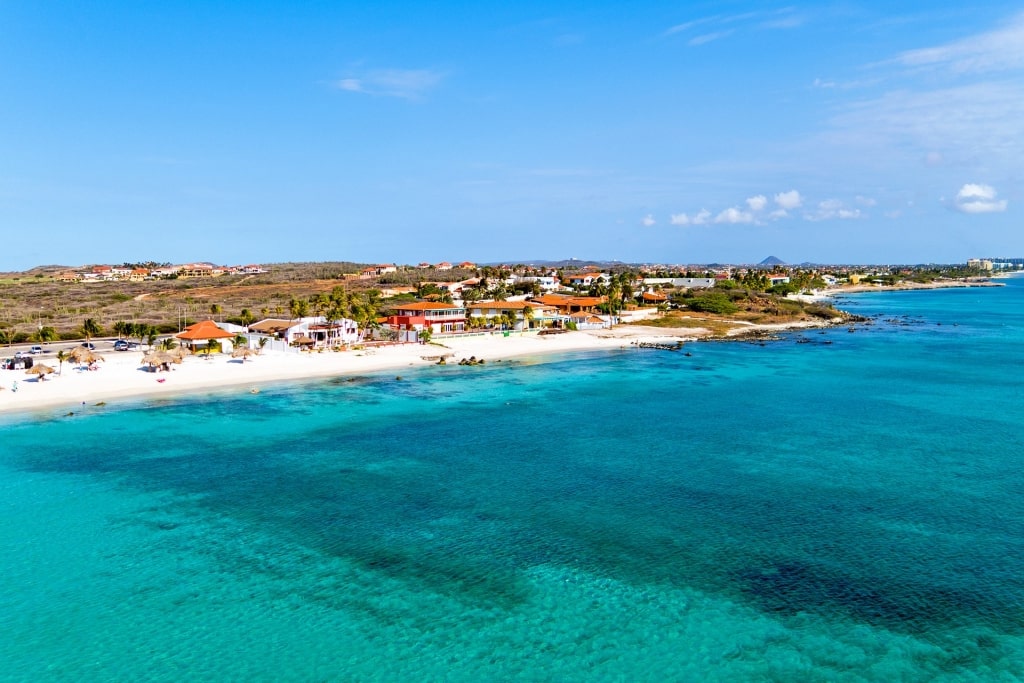
Boca Catalina
If you can only go on one snorkeling trip while on the island, head to Boca Catalina, which has everything a snorkeler could ever want and is considered the best site for snorkeling in Aruba.
Located near a white sand beach, Boca Catalina can be reached by swimming off the shore. If you’re only a casual snorkeler, Boca Catalina’s optimal location allows you to hop in and out of the water—there’s no need to spend hours out in the ocean.
However, if you’re not interested in spending some time on the sand, you can also go to Boca Catalina by boat. The water is calm and warm, making entry to and from the boat a breeze. Most boats will take you to Catalina Cove, which is a little rocky when entering off the shore.
Since so many snorkel boats visit the area, the fish are used to humans and may come up to you in the water. If you have a camera while snorkeling in Aruba, be sure to bring it along as you’ll likely get close to various marine species.
Eagle Beach
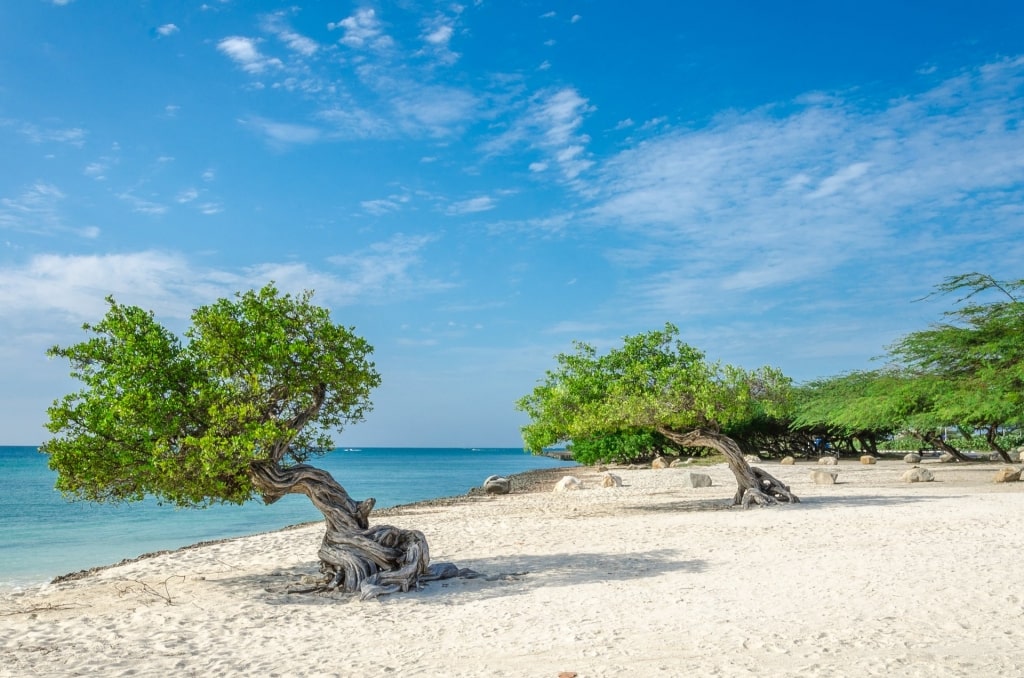
Eagle Beach
Eagle Beach is one of the best beaches in Aruba. Not only is it close to Oranjestad, but it’s also a sea turtle nesting ground. (If you happen to see them relaxing on the island, make sure to keep your distance.)
As if that wasn’t enough, the beach is also home to two of the most famous fofoti trees that Aruba is known for. The trees look similar to life-sized bonsai and have twisted trunks and branches that reach towards the water. The two fofoti trees on Eagle Beach have been used in numerous Aruba advertising campaigns, and the beach usually has photographers snapping shots at sunset.
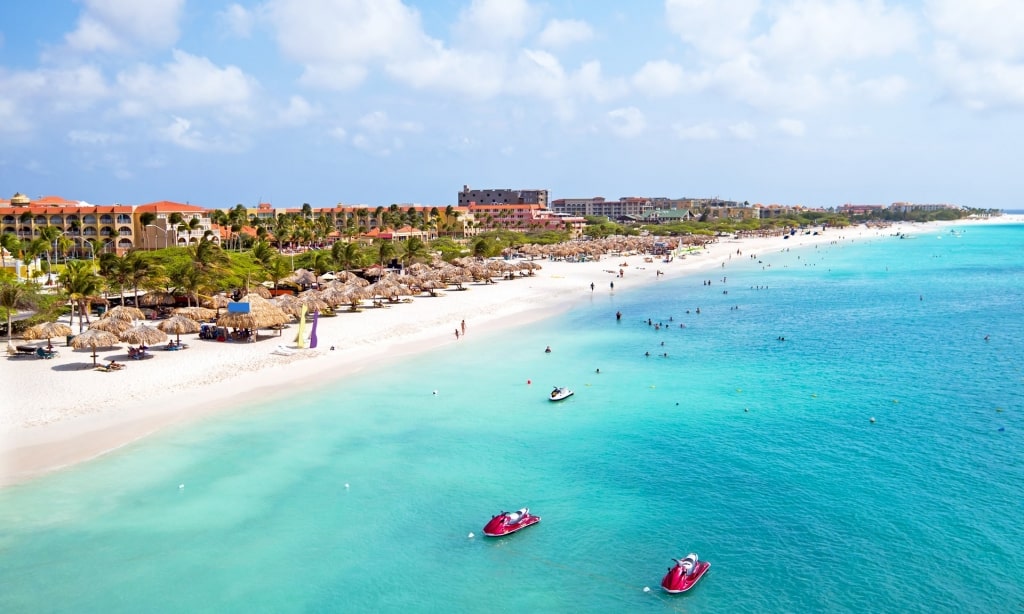
Eagle Beach
If you’re searching for tropical fish, you’re also in luck. While Eagle Beach doesn’t have a reef, it does have the distinction of being one of the easiest places to snorkel on the island. You can find fish and crabs in water no more than a few feet deep. Even better, you don’t have to bring your snorkel gear as there are numerous beach vendors that rent everything you could need if you decide to go snorkeling at the last minute.
Eagle Beach is one of the best places to snorkel in Aruba if you’re short on time, or if you want to be in a spot near shopping and great restaurants, too.
Malmok Beach
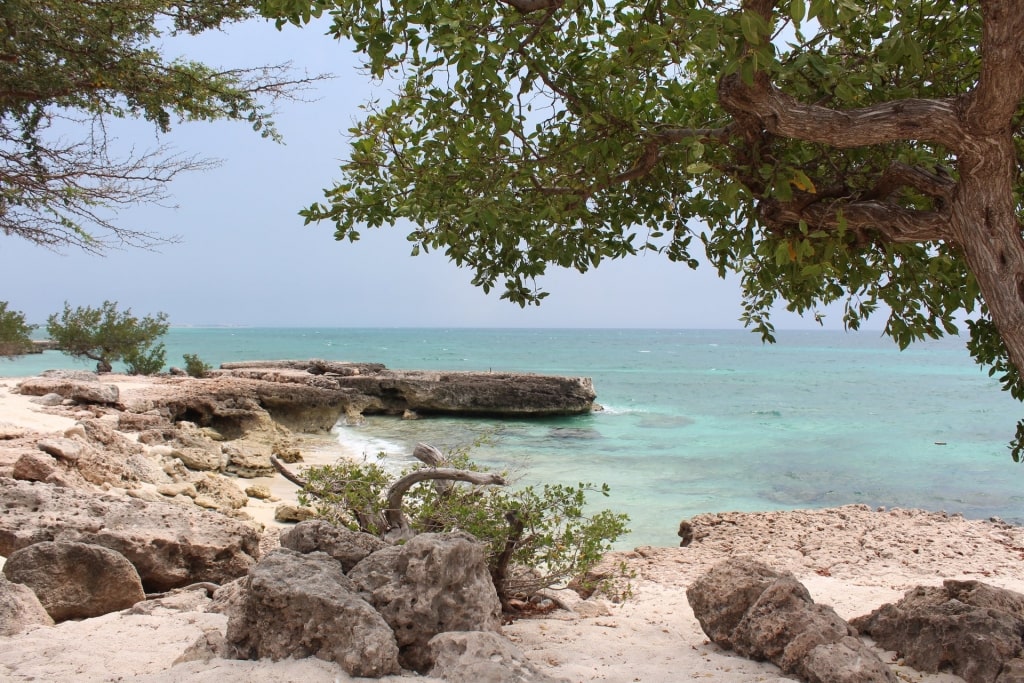
Malmok Beach
Malmok Beach is a popular area for every kind of recreation, and you’ll often see tourists and locals running or cycling on the road that winds along the shore.
Bring your snorkel gear since Malmok Beach doesn’t have any facilities. Also, because of its popularity with snorkelers on the island, the water can get a bit crowded by mid-afternoon. Try to arrive early if you want the fish all to yourself.
At the reef just off the shore, expect to see dozens of different species of fish, as well as bottom-dwelling creatures like crustaceans and eels. You may want to bring water shoes for the small rocks located at the entry and exit of the reef.
If you’re interested in identifying everything you see, buy an Aruba fish ID card in advance and carry it underwater with you.
Tres Trapi Beach
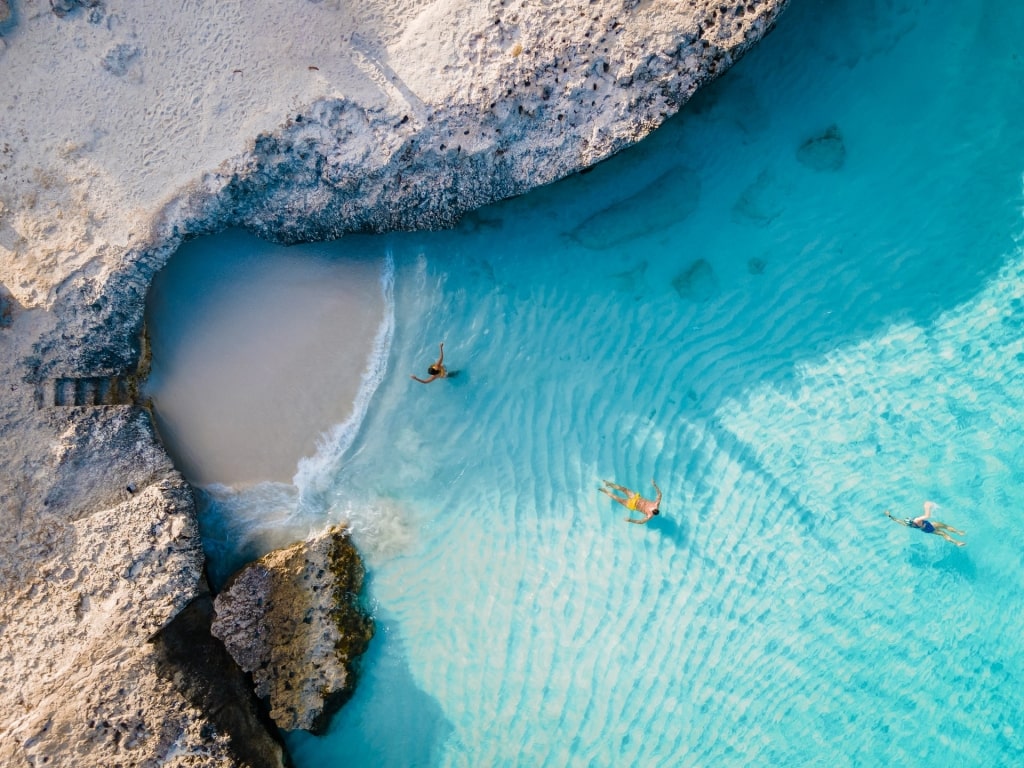
Tres Trapi Beach
Just a few minutes north of Malmok Beach is another one of the best spots for snorkeling in Aruba: Tres Trapi Beach. Tres Trapi (which means “three steps”) has a straightforward entrance into the ocean and while you won’t find a reef, you will find dozens of starfish.
To see the starfish, swim about 20 meters straight out from the ocean entry steps. From there, and for the next 200 or so feet ahead, you’ll start to see starfish dotting the ocean floor. They are usually located in about 10 feet of water, making it easy to see them while snorkeling. Color-wise, they can range from deep brown hues to extremely vibrant shades of red, orange, and yellow.
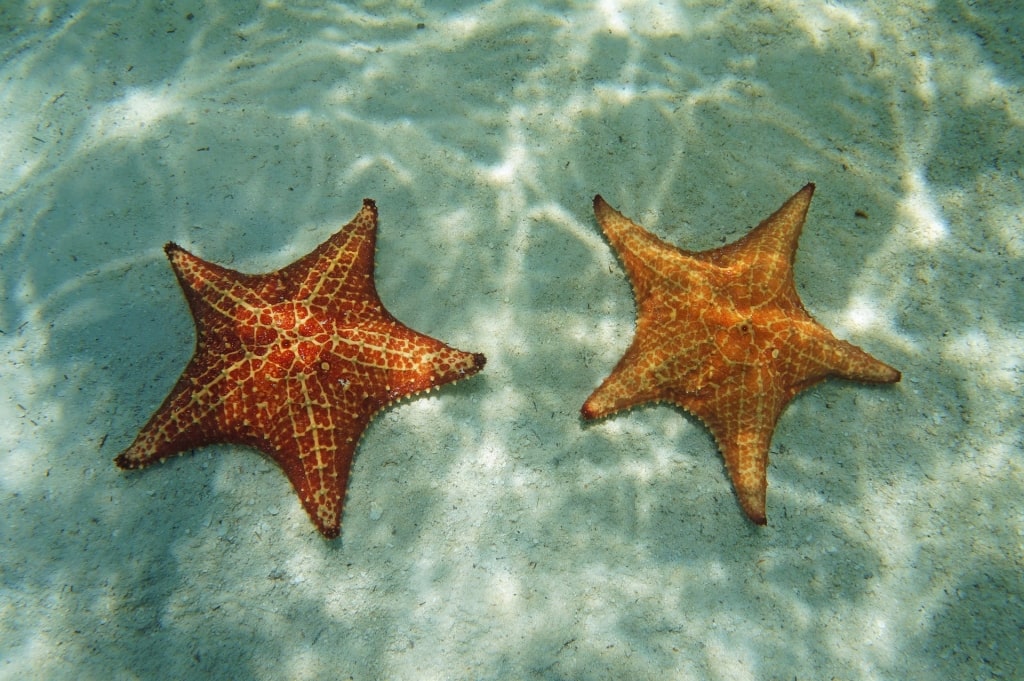
Tres Trapi Beach
There are several different species of starfish (also known as sea stars) in Aruba, but the most common one on the island is the cushion sea star, which is mostly what you’ll find at Tres Trapi. They look a bit stumpy or squatty with meaty centers and thick, short legs. As with all living creatures under the water, it’s best not to handle them. However, they won’t hurt you if you accidentally touch one of them.
Mangel Halto
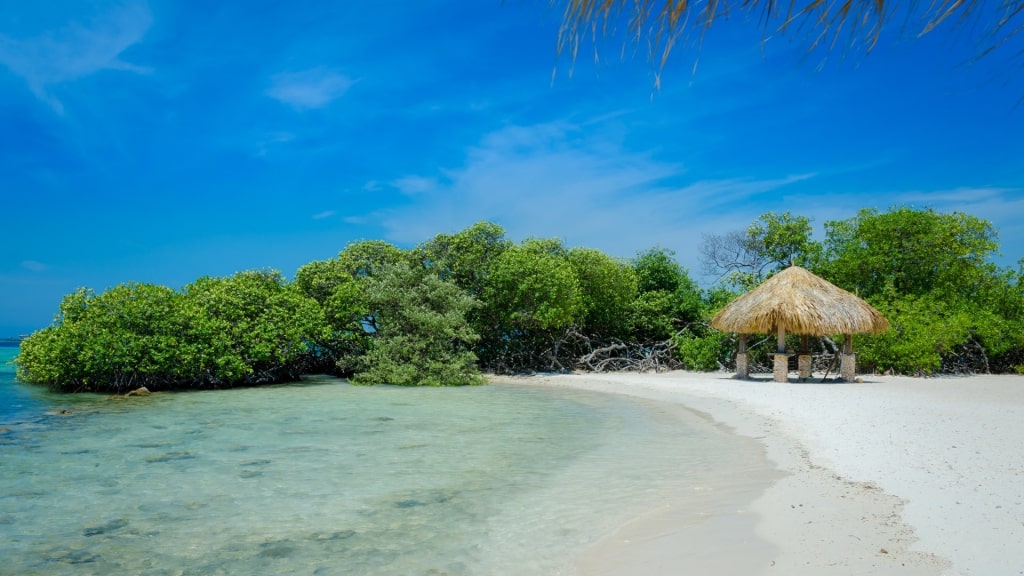
Mangel Halto
About 20 minutes south of Oranjestad, Mangel Halto sits behind a mangrove thicket that creates a beach that feels private and secluded. There’s a small sunken tugboat by the nearest buoy and the sea has that perfect shade of Caribbean turquoise blue, as well as the ideal Caribbean temperature, sitting steadily around 78-85 degrees F. It’s one of the most popular spots for snorkeling in Aruba, especially since there’s a nearby reef.
You can enter the water via the large platform dock or by walking in between the mangroves—bring water shoes as rocks and shells can wash up around the roots.
The currents beyond the reef can be strong, so beginners will want to stay near the shallow bay area, where the water closest to land is relatively calm. Strong swimmers can exit the sheltered bay via one of the gaps in the reef and explore the other side. But make sure to take a second to pause while inside the reef and evaluate the current and swells before swimming in further.
Angelfish, parrotfish, and big-eyed pufferfish are very common. Be careful where you step as there’s also a lot of coral in this area.
Baby Beach
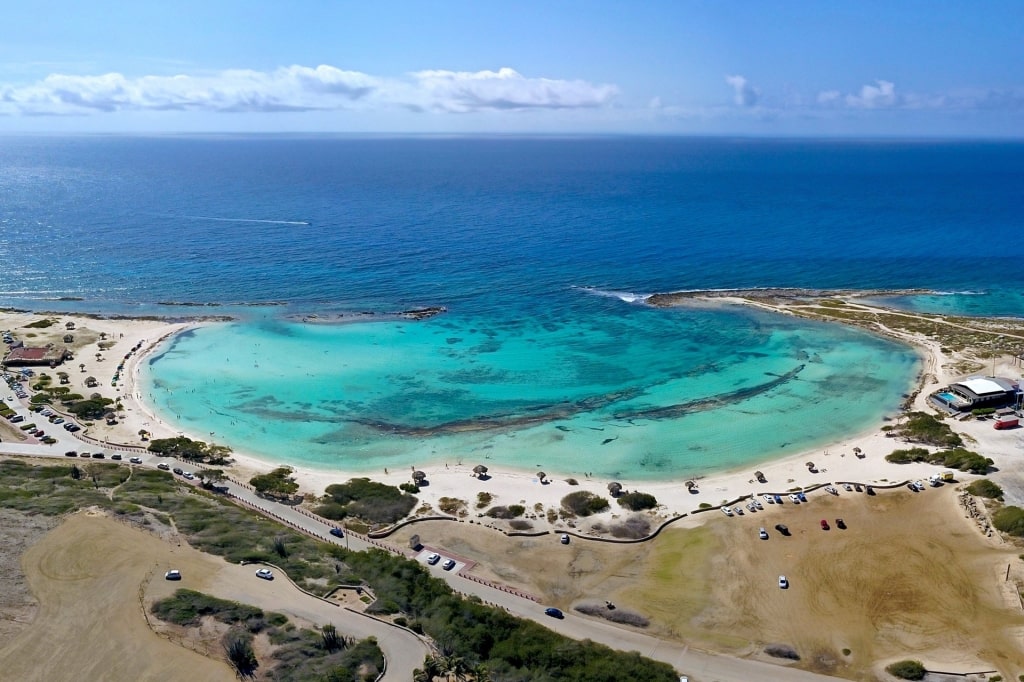
Baby Beach
Don’t let Baby Beach’s adorable name fool you; it’s one of the largest and best beaches for snorkeling in Aruba. Unlike other sites on this list, Baby Beach is a half-moon-shaped bay that opens to the ocean on two sides with a large sandbar in the middle to block currents, waves, and swells.
The protected water off Baby Beach is where you’ll find some of the best snorkeling in Aruba. The bay is massive and has a gradual drop-off, which allows you to walk 50 or 60 yards out and still touch the bottom. You can bring your snorkel equipment or swing by one of the local beach shops that rent everything from snorkel gear to sun loungers and umbrellas. (Don’t forget to order a beachside cocktail, too.)
As there are strong currents outside of the cove, most of the marine life stays close to shore, meaning you’ll have a good chance at seeing parrotfish, small squid, crabs, and even eels and barracudas.
Read: Best Places to Visit in Aruba
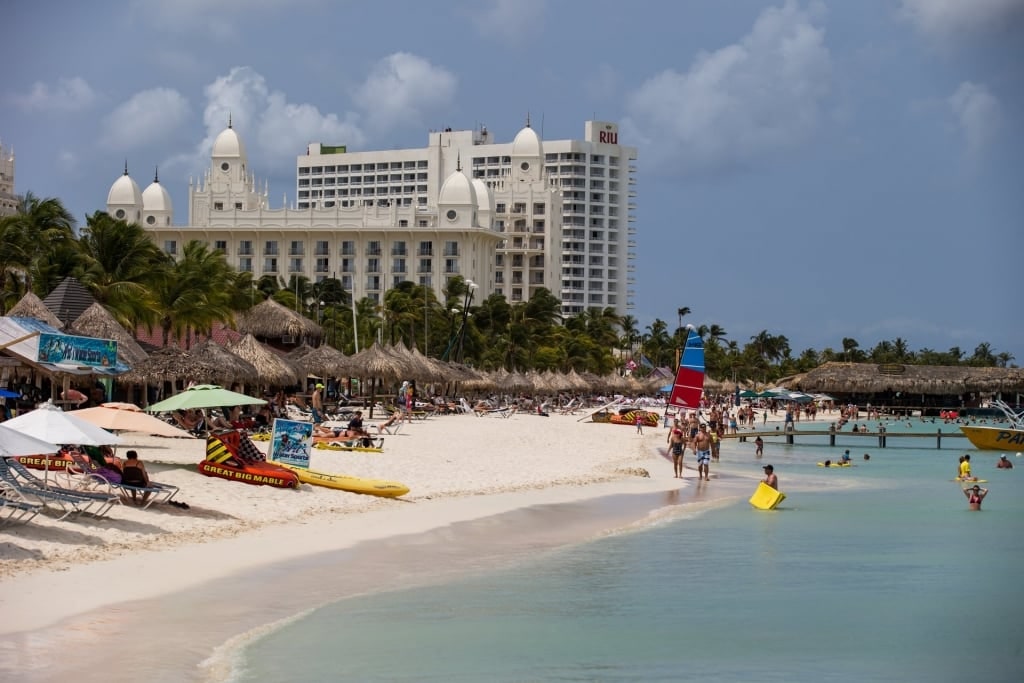
Aruba
Of course, there’s far more to do in Aruba than snorkeling. On this tropical island, you can go on a guided horseback ride, hop on a sunset cocktail cruise, or even cruise 100 feet below the surface in a submarine. If you’re ready to book your next tropical getaway, browse cruises to Aruba on our website and explore all of the exciting excursions available.
